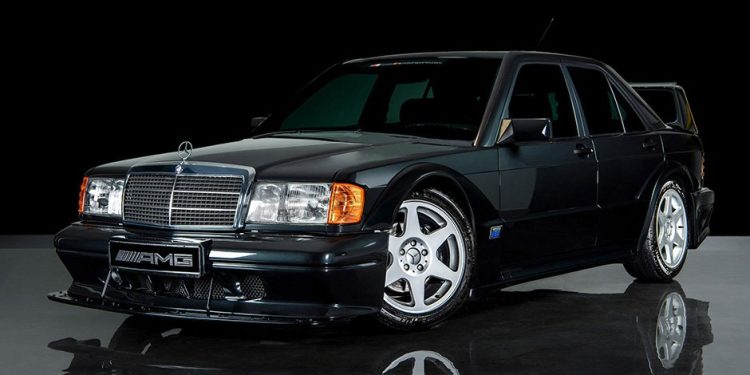Incredible Mercedes 190E Evolution II set to fetch big bucks
Utter the phrase ‘1980s homologation touring cars’ and most people in this part of the world would think first of the BMW E30 M3 or the Ford Sierra RS500 Cosworth. Underrated, but perhaps just as important as both models, is the Mercedes-Benz 190E 2.3-16.
The 190E was significant for several reasons. It was Mercedes’ first attempt at a smaller, more affordable nameplate with a wider audience. And it’s tuned versions, kicked off by the 2.3-16, helped set the tone for not only the future creation of AMG, but also gave BMW the impetus to make the E30 M3.

There were several hot 190Es produced, but none were hotter than the 2.5-16 Evolution II. Built concurrently in both production form and race-car form, the W201 Evo II debuted in 1990. Just 502 of the former were produced; all sold out before the model’s unveiling at the Geneva Autoshow that March.
Under the bonnet was a Cosworth-built 2.5-litre producing 173kW of power and 245Nm of torque, linked to a five-speed Getrag box. Those outputs are peanuts relative to today’s performance cars, but enough to make it a track-day weapon at the time. It’s worth noting that the powertrain was stifled somewhat by homologation constraints at the time, too.

If anything, the Evo II is better known for its wild aerodynamics and its fairly advanced-for-the-period chassis geometry.
While the first Evolution was quite an aggressive looker, it’s not a patch on the follow-up, with its enormous adjustable rear wing, adjustable front splitter, and uniquely formed wheel-arch extensions. Suspension could be adjusted between three settings from inside the car, lowering the car between 15mm and 45mm. Lightweight materials were used for the wheels and brake discs.

Mercedes’ hard work paid off with a DTM title in 1992. Collectors have always been interested in Evo IIs, but only in the last few years have values on the best examples skyrocketed. The latest Evo II listing is a prime example.
Listed by Speedart Motorsports, ‘chassis 738813’ has just 11,339 miles on the odometer. It’s spotless, too, from the leather Recaro buckets to the Blauschwarz Metallic bodywork. The price? A cool US$475,000 ($695,687).

“Chassis 738813 was completed at the Sindelfingen plant on the last week of May 1990 and safely transported to its designated dealer Autohaus Santelmann GmbH, Mercedes-Benz Center in the city of Lüneburg in Lower Saxony,” says Speedart.
“After clocking shy of 10,000 kilometers, the Evo II was subsequently purchased by Antonio de Jesus Sousa and relocated to the city of Vila Nova de Gaia in the Northwest coast of Portugal, during the first quarter of 1993.
“We believe that the car remained with Mr. Sousa until 2015 and was enjoyed sparingly along the scenic Norte Region and the Porto District. During its 23 years custodianship in Portugal the Mercedes accumulated approximately 8,000 kilometers while curated in a climate controlled garage.
“Fast forward in the year 2015 the car was exhibited by Dutch classic car dealer Auto Leitner during the leading trade fair of Techno Classica at Essen. By that time the Evo II has become a cult status icon and a highly coveted ‘youngtimer’ by well-heeled enthusiasts the world over.”





